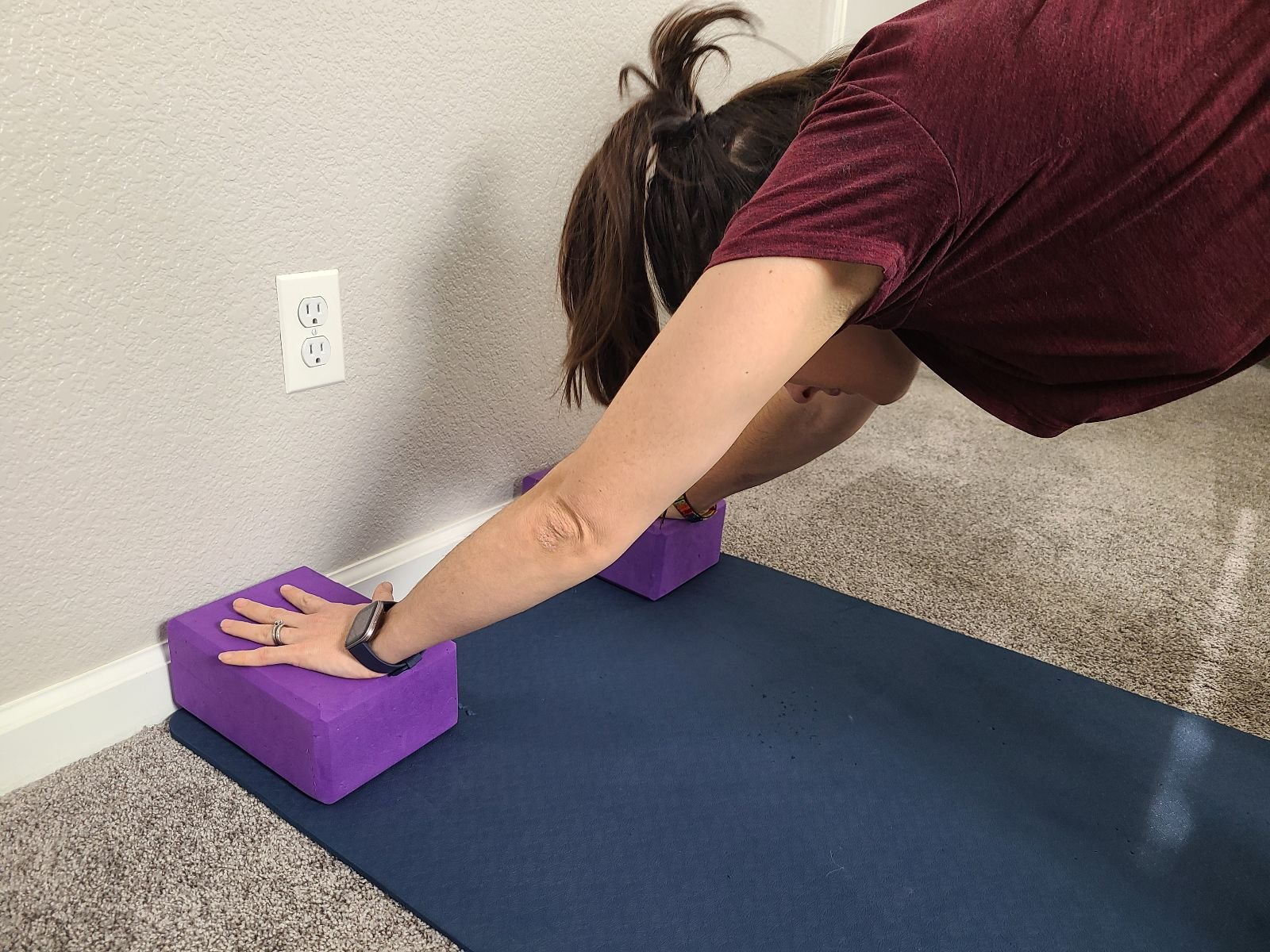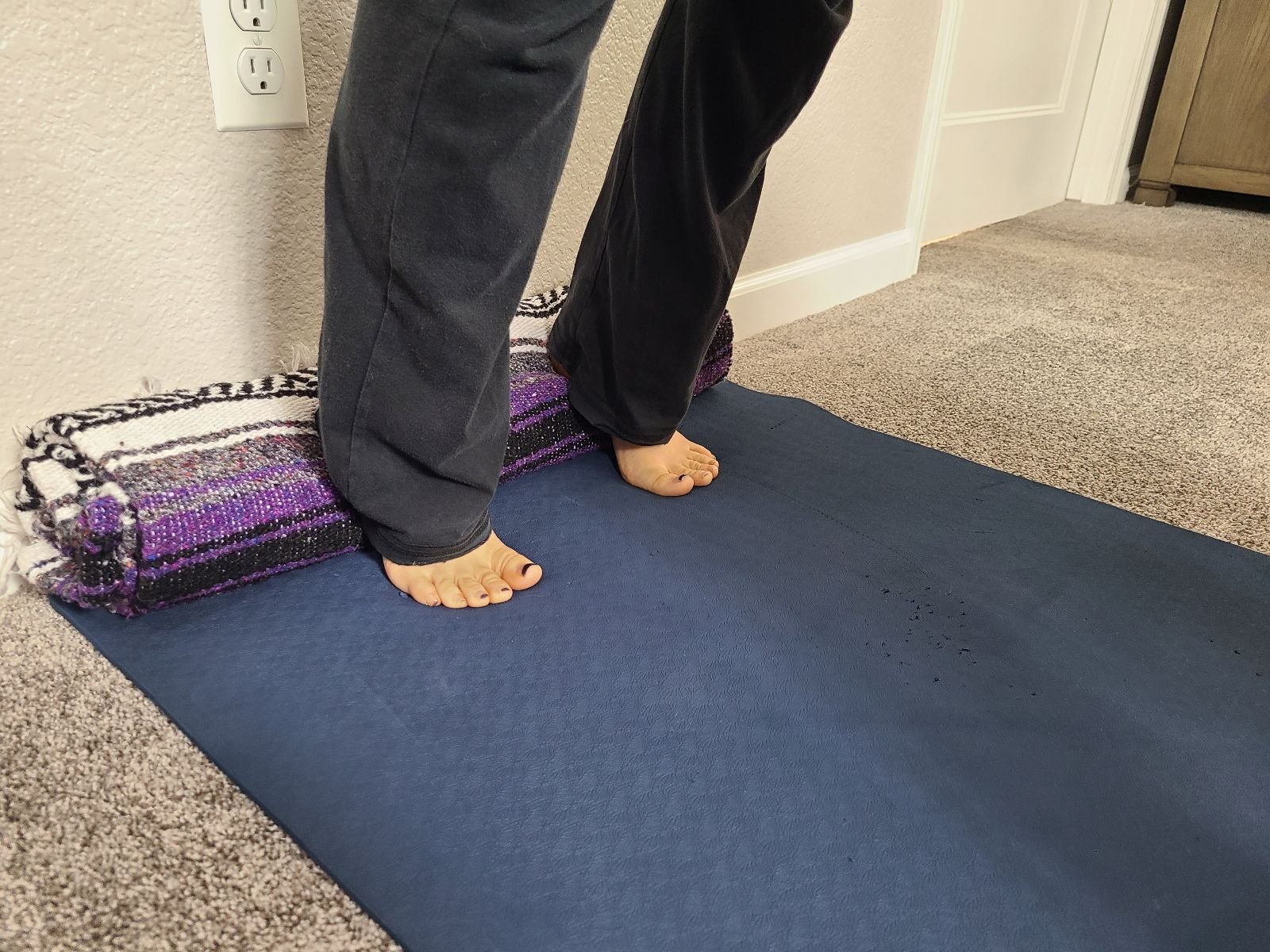Why You Have Pain in Downward-Facing Dog and How to Fix It
/Downward-Facing Dog (Adho Mukha Svanasana) is a foundational yoga pose practiced in many different styles of yoga. It is a great all-over body stretch for the hamstrings, calves, shoulders, and spine. It also strengthens the upper back, arms, hands, and core.
However, Downward-Facing Dog can cause pain in some people. Reasons for this might include the following:
Tight hamstrings and/or calves: Downward-Facing Dog requires a significant amount of flexibility in the legs, particularly the hamstrings. If your hamstrings or calves are tight, you may experience pain in the backs of your legs when you try to get into the pose.
Weak core muscles: Downward-Facing Dog requires a strong core to support the body's weight. If your core is weak, you may experience pain in your lower back when you try to hold the pose. As you strengthen your core, your abdominal muscles will help support your lower back.
Incorrect alignment: If your hands and feet are not positioned correctly or your back is rounded in Downward-Facing Dog, you can put stress on your joints and muscles, which can lead to pain.
Injuries, surgeries, or conditions: Certain injuries or conditions that affect the legs, hips, back, neck, or arms can cause pain in Downward-Facing Dog. Shoulder conditions or scoliosis, for example, can make finding alignment in the pose difficult.
Here are some tips on how to limit pain in Downward-Facing Dog:
Stretch your hamstrings: Before you try Downward-Facing Dog warm up your body and stretch your hamstrings. You can do this by holding hamstring stretches such as seated or standing forward folds for 30 to 60 seconds each.
Strengthen your core: You can strengthen your core with planks, lengthening and lowering your arms up to your ears and down by your sides, or transverse abdominis breathing exercises. By strengthening your core, you can better support your body’s weight in Downward-Facing Dog.
Engage your core: Engage your core in Downward-Facing Dog by knitting the sides of your abdomen together to support your back and prevent pain.
Keep your back long: Avoid rounding your back, and lengthen your spine from your sacrum to the crown of your head. Often your head may drop down. Think about keeping the back of the neck long and lifting your tailbone up toward the ceiling.
Use correct alignment: Make sure your hands and feet are positioned correctly with your hands shoulder-width apart, fingers spread wide, feet hip-width apart, and toes pointed forward.
In addition to these tips, here are some modifications you can try:
Use blocks or bolsters: If you have tight hamstrings or shoulders, you can use blocks or bolsters to support your hands or feet in Downward-Facing Dog. This will help to deepen the stretch and move more of your body weight into your legs or arms.
Bend your knees: If you have weak core or back pain, you can bend your knees slightly to reduce the amount of weight on your core and back.
Lift your heels: Especially with tight hamstrings, it can be hard to bring your heels to the ground. You can further support your lifted heels by placing a rolled-up blanket or towel under them or rest them on the wall.
Do Downward-Facing Dog at the wall: If you are having trouble holding Downward-Facing Dog on the floor, you can try doing it against a wall. Place your hands on the wall at shoulder height and walk your feet back until you are in a Downward-Facing Dog position.
If you are still experiencing pain in Downward-Facing Dog after following these tips and modifications, talk to a doctor or qualified yoga teacher to help you further adapt this pose and determine if the pose is right for you.
If you have any of the following conditions, you might need to avoid Downward-Facing Dog:
Wrist, elbow, or shoulder injury: Downward-Facing Dog puts a lot of weight on your wrists, elbows, and shoulders and these joints may not be able to safely support your body if they are injured.
Carpal tunnel syndrome: Carpal tunnel syndrome is a condition that causes pain, numbness, and tingling in the hands and fingers. Hands and fingers are used as bases for supporting your body weight in Downward-Facing Dog, and the pressure can aggravate carpal tunnel syndrome symptoms.
High blood pressure: Downward-Facing Dog is an inversion, which means that your head is below your heart. Inversions can raise blood pressure, so the pose might need to be avoided or modified by those with this condition.
Neck pain: Downward-Facing Dog moves body weight into the upper body, when it is usually supported by the lower body when standing. This means that the pose can put additional pressure on the neck. If you have neck injuries or pain, the pose may not be suitable for you.
Pregnancy: Downward-Facing Dog can put pressure on the abdomen, which can be uncomfortable and/or risky for some pregnant women. It is heavily debated whether this and other inversions are safe during pregnancy, so it is best to discuss whether to include this pose in your practice with your doctor.
If you need to avoid Downward-Facing Dog, talk to your doctor and yoga instructor about alternatives.




